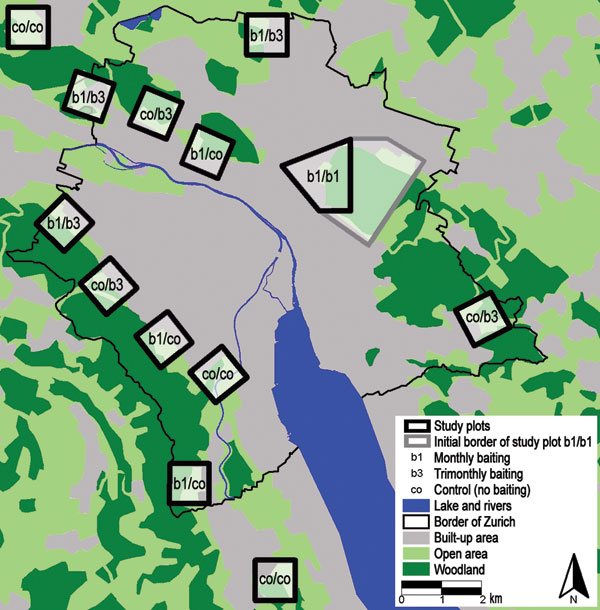Volume 14, Number 10—October 2008
Dispatch
Control Strategy for Echinococcus multilocularis
Figure 1

Figure 1. Study area of the anthelminthic baiting experiments in the conurbation of Zurich, Switzerland. Thirteen study plots were defined along the urban periphery during the 2-phased baiting period (phase 1, April 2000–October 2001; phase 2, November 2001–December 2003). Five different treatment schemes were used in these plots: co/co = no bait delivery during the whole study (n = 3 sites of 1 km2 ); b1/b3 = bait delivered monthly during the first phase and trimonthly during the second phase (n = 3); co/b3, no bait delivery during the first and trimonthly delivery during the second phase (n = 3); b1/co, monthly bait delivery during the first and no delivery during the second phase (n = 3); b1/b1, monthly bait delivery during the first and the second phase in a single study plot. This largest study plot comprised initially an area of 6 km2 (gray line) and finally an area of 2 km2 during the second baiting phase.